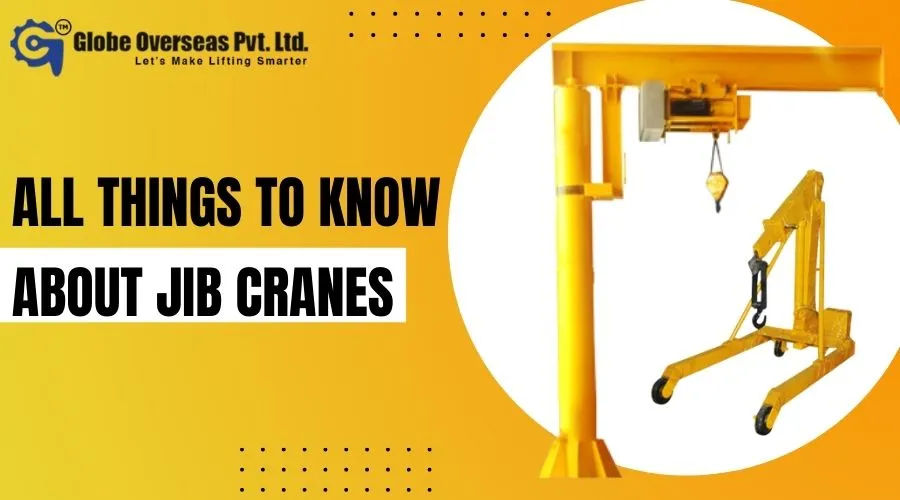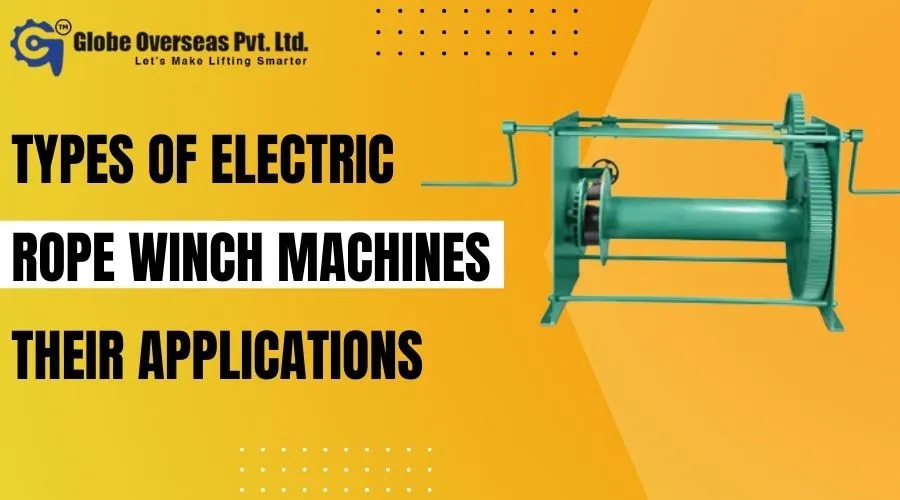In the process of industrialization, lifting machines the importance of material…

All Things to Know About Jib Cranes and Their Types
Jib cranes are a must-have for your workshop or a tool room for your growing industry! Jib cranes are a result of excellent engineering machines that provide the facility for overhead lifting.
These machines are effective to do some repetitive or even unique tasks. If you are a manufacturer, you would necessarily need jib cranes at some point in your business expansion to facilitate streamlined production.
Those cranes are usually made to simplify the difficult lifting tasks in smaller areas or relatively lower burdens. In very simple words, a crane is a horizontal member of equipment and a jib is attached to it.
Industrial premises most of the time need equipment that helps in shifting or moving weights or objects. Such things are possible via jib cranes. These are ideal for all sizes of production factories. The range of handling weights ranges from 0.5 lbs to 5 tons capacity.
As a Jib Cranes Manufacturer, Global overseas Pvt ltd. provides jib cranes that maximize space due to their unique design and variants. The machinery can revolve in a round from 180 to 360 degrees manual and power-driven with respect to its support structure.
As a Crane and Hoists Manufacturer, the company ensures that flexibility can be provided to customers by having the choice of installing manual or electric hoists. Having a production or manufacturing unit can prove to be the ultimate solution for the lifting and transportation of material.
Jib machines are used to lift heavy loads and transport them around a small circumference like inside a factory, outdoor production unit, or in the same motion around a small area.
Designing of jib cranes
Jib cranes have fundamental structures and are easy to maintain. The jib is a highly mechanical lifting machine with numerous fittings and fixtures joined together to facilitate reposition of heavy materials. It has components like:
- The boom or the reach – as the name suggests is the part of machinery that comes into contact with transportation material. If the crane is freestanding the rotation of the boom can be taken up to 360 degrees whereas if the cranes are attached to pillars of walls the rotation can be facilitated from 180 to 360 degrees.
- Mast – mast is a vertical pillar-like structure that holds or supports the boom of machinery that are freestanding.
- Hoist – it is that part of jib cranes whose function is to lift, position, and unload the material
- Trolley – trolley is a binding force of jib that can either be manual or mechanized. It carries a hoist, wires, wire rope, chains, and the hook on the boom.
- Control buttons -push the button is used to control the rotation of the reach and motion of the trolley.
Types of Jib Cranes
There are several types of cranes depending upon usage, design, and weight-lifting capacity.
1. Column-Mounted Jib Cranes
This type of crane is designed to be freestanding. The Column-mounted jib cranes do not require fittings but can be installed on the floor itself. The machine is made customized and can have electric or manual swell.
Arm rotation can have variable speed and be adjusted depending upon load. The rotation can be swirled up to full 360 degrees with a 6-meter long arm. Weight lifting capacity can extend up to 5 tons.
2. Mobile Floor Crane
The Mobile jib cranes are used to transport material indoors or outdoor areas or mainly in assembly tool rooms. These are equipped with hydraulic cylinders and pump and are floor based.
The weight lifting capacity can be extended up to 2 tons with a 3-level boom extension. The crane is highly effective and easily foldable
3. Wall-Mounted Cranes
The Wall-mounted jib cranes can be installed easily on walls and do not need a strong foundation. The rotation can be extended to 270 degrees with a weight capacity of up to 3 tons.
It can be made with manual or electric customization for customers. Arm length can be customized from 2 to 6 meters.
You May Also Like: Different Types of Hoists for Overhead Cranes
You May Also Like: Brief Comparison Between Overhead Crane and Monorail Crane




 FSC India.
FSC India. 